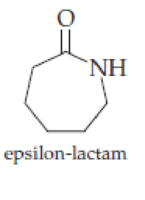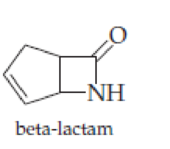
Pearson eText Fundamentals of General, Organic, and Biological Chemistry -- Instant Access (Pearson+)
8th Edition
ISBN: 9780135213759
Author: John McMurry, David Ballantine
Publisher: PEARSON+
expand_more
expand_more
format_list_bulleted
Concept explainers
Textbook Question
Chapter 17, Problem 17.65AP
When both the


Expert Solution & Answer
Want to see the full answer?
Check out a sample textbook solution
Students have asked these similar questions
What would be the toxicological endpoints for neurotoxicity?
What are "endpoints" in toxicology exactly? Please give an intuitive easy explanation
Fura-2 Fluorescence (Arbitrary Unit)
4500
4000
3500
3000
2500
2000
1500
1000
500
[Ca2+]=2970nM, 25°C
[Ca2+] 2970nM, 4°C
[Ca2+]=0.9nM, 25°C
[Ca2+] = 0.9nM, 4°C
0
260
280
300
340
360
380
400
420
440
Wavelength (nm)
←
<
The figure on the LHS shows the excitation spectra of Fura-2 (Em
= 510 nm) in 2 solutions with two different Ca2+ ion concentration
as indicated. Except for temperature, the setting for excitation &
signal acquisition was identical.<
ப
a) The unit in Y-axis is arbitrary (unspecified). Why? <
<
b) Compare & contrast the excitation wavelength of the Isosbestic
Point of Fura-2 at 25 °C & 4 °C. Give a possible reason for the
discrepancy. <
c) The fluorescence intensity at 25 °C & 4 °C are different. Explain
why with the concept of electronic configuration. <
Chapter 17 Solutions
Pearson eText Fundamentals of General, Organic, and Biological Chemistry -- Instant Access (Pearson+)
Ch. 17.1 - Identify the following molecules as a carboxylic...Ch. 17.1 - Prob. 17.2PCh. 17.1 - Prob. 17.3PCh. 17.1 - Prob. 17.4PCh. 17.1 - Prob. 17.5PCh. 17.1 - Prob. 17.6PCh. 17.1 - In the following pairs of compounds, which would...Ch. 17.1 - Write both condensed and line structures for (a)...Ch. 17.1 - Prob. 17.9PCh. 17.1 - Draw structures corresponding to these names: (a)...
Ch. 17.1 - Prob. 17.11PCh. 17.1 - Prob. 17.12PCh. 17.1 - Prob. 17.13KCPCh. 17.2 - Salsalate, which is an ester formed by the...Ch. 17.2 - Prob. 17.2CIAPCh. 17.2 - Prob. 17.3CIAPCh. 17.2 - Prob. 17.14PCh. 17.2 - Prob. 17.15PCh. 17.2 - Prob. 17.16PCh. 17.3 - Prob. 17.17PCh. 17.3 - Raspberry oil contains an ester that is made by...Ch. 17.3 - Prob. 17.19PCh. 17.3 - Prob. 17.20PCh. 17.3 - Prob. 17.21PCh. 17.4 - If a bottle of aspirin tablets has the aroma of...Ch. 17.4 - Prob. 17.23PCh. 17.4 - What carboxylic acids and amines result from...Ch. 17.5 - Prob. 17.25PCh. 17.5 - Prob. 17.26KCPCh. 17.6 - Prob. 17.27PCh. 17.6 - Prob. 17.28PCh. 17.6 - Prob. 17.4CIAPCh. 17.6 - Prob. 17.5CIAPCh. 17.6 - Prob. 17.29PCh. 17 - Prob. 17.30UKCCh. 17 - Prob. 17.31UKCCh. 17 - One phosphorylated form of glycerate is...Ch. 17 - Prob. 17.33UKCCh. 17 - Prob. 17.34UKCCh. 17 - Prob. 17.35UKCCh. 17 - Prob. 17.36UKCCh. 17 - For the following compounds, give the systematic...Ch. 17 - Write the equation for the ionization of hexanoic...Ch. 17 - Prob. 17.39APCh. 17 - Prob. 17.40APCh. 17 - Prob. 17.41APCh. 17 - Give systematic names for the following carboxylic...Ch. 17 - Give systematic names for the following carboxylic...Ch. 17 - Prob. 17.44APCh. 17 - Prob. 17.45APCh. 17 - Draw structures corresponding to the following...Ch. 17 - Draw structures corresponding to the following...Ch. 17 - Malic acid, a dicarboxylic acid found in apples,...Ch. 17 - Prob. 17.49APCh. 17 - Prob. 17.50APCh. 17 - Prob. 17.51APCh. 17 - Prob. 17.52APCh. 17 - Prob. 17.53APCh. 17 - Give systematic names for the following structures...Ch. 17 - Give systematic names for the following structures...Ch. 17 - Prob. 17.56APCh. 17 - Prob. 17.57APCh. 17 - Give systematic names for the following structures...Ch. 17 - Give systematic names for the following structures...Ch. 17 - Prob. 17.60APCh. 17 - What compounds are produced from hydrolysis of...Ch. 17 - Procaine, a local anesthetic whose hydrochloride...Ch. 17 - Prob. 17.63APCh. 17 - Lactones are cyclic esters in which the carboxylic...Ch. 17 - When both the carboxylic acid and the amine are in...Ch. 17 - LSD (lysergic acid diethylamide), a semisynthetic...Ch. 17 - Prob. 17.67APCh. 17 - Prob. 17.68APCh. 17 - Prob. 17.69APCh. 17 - Prob. 17.70APCh. 17 - Prob. 17.71APCh. 17 - Prob. 17.72APCh. 17 - Prob. 17.73APCh. 17 - Prob. 17.74APCh. 17 - Prob. 17.75APCh. 17 - Three amide isomers, N,N-dimethylformamide,...Ch. 17 - Prob. 17.77CPCh. 17 - Prob. 17.78CPCh. 17 - Mention at least two simple chemical tests by...Ch. 17 - Prob. 17.80CPCh. 17 - Name the following compounds.Ch. 17 - Each of the following materials has an ester that...Ch. 17 - Prob. 17.83GPCh. 17 - Prob. 17.84GP
Knowledge Booster
Learn more about
Need a deep-dive on the concept behind this application? Look no further. Learn more about this topic, biochemistry and related others by exploring similar questions and additional content below.Similar questions
- draw in the structure of each amino acid (as L-amino acids) using the Fischer projection style. an example has been included. Draw the structure for glycine, alanine, valine, isoleucine, methionine, proline, phenylalanine, tryptophan, serine, threonine, asparagine, glutamine, lysine, arginine, aspartic acid, glutamic acid, histidine, tyrosine, cysteinearrow_forwarddraw in the structure of each amino acid (as L-amino acids) using the Fischer projection style. an example has been includedarrow_forwarddraw in the structure of each amino acid (as L-amino acids) using the Fischer projection style. an example has been includedarrow_forward
- Draw out the following peptide H-R-K-E-D at physiological pH (~7.4). Make sure toreference table 3.1 for pKa values.arrow_forwardThe table provides the standard reduction potential, E', for relevant half-cell reactions. Half-reaction E'° (V) Oxaloacetate² + 2H+ + 2e malate²- -0.166 Pyruvate + 2H+ + 2e → lactate -0.185 Acetaldehyde + 2H+ + 2e¯ →→→ ethanol -0.197 NAD+ + H+ + 2e--> NADH -0.320 NADP+ + H+ + 2e →→ NADPH Acetoacetate + 2H+ + 2e¯ - -0.324 B-hydroxybutyrate -0.346 Which of the reactions listed would proceed in the direction shown, under standard conditions, in the presence of the appropriate enzymes? Malate + NAD+ oxaloacetate + NADH + H+ Malate + pyruvate oxaloacetate + lactate Pyruvate + NADH + H+ lactate + NAD+ Pyruvate + p-hydroxybutyrate lactate + acetoacetate Acetaldehyde + succinate ethanol + fumerate Acetoacetate + NADH + H+ → B-hydroxybutyrate + NAD+arrow_forwardArrange the four structures in order from most reduced to most oxidized. Most reduced R-CH2-CH3 R-CH2-CH₂-OH R-CH,-CHO R-CH₂-COO Most oxidizedarrow_forward
- for each pair of biomolecules, identify the type of reaction (oxidation-reduction, hydrolysis, isomerization, group transfer, or nternal rearrangement) required to convert the first molecule to the second. In each case, indicate the general type of enzyme and cofactor(s) c reactants required, and any other products that would result. R-CH-CH-CH-C-S-COA A(n) A(n) A(n) A(n) Palmitoyl-CoA R-CH-CH=CH-C-S-CoA ° trans-A-Enoyl-CoA reaction converts palmitoyl-CoA to trans-A2-enoyl-CoA. This reaction requires and also produces Coo HN-C-H CH₂ CH₂ CH CH CH, CH, L-Leucine CH, CH, D-Leucine 8/6881 COO HÌNH: reaction converts L-leucine to D-leucine. This reaction is catalyzed by a(n) H-C-OH H-C-OH C=0 HO-C-H HO-C-H H-C-OH H-C-OH H-C-OH CH,OH Glucose H-C-OH CH,OH Fructose OH OH OH CH-C-CH₂ reaction converts glucose to fructose. This reaction is catalyzed by a(n) OH OH OPO I CH-C-CH H Glycerol Glycerol 3-phosphate H reaction converts glycerol to glycerol 3-phosphate. This reaction requires H,N- H,N H…arrow_forwardAfter adding a small amount of ATP labeled with radioactive phosphorus in the terminal position, [7-32P]ATP, to a yeast extract, a researcher finds about half of the 32P activity in P; within a few minutes, but the concentration of ATP remains unchanged. She then carries out the same experiment using ATP labeled with 32P in the central position, [ẞ-³2P]ATP, but the 32P does not appear in P; within such a short time. Which statements explain these results? Yeast cells reincorporate P; released from [ß-³2P]ATP into ATP more quickly than P¡ released from [y-³2P]ATP. Only the terminal (y) phosphorous atom acts as an electrophilic target for nucleophilic attack. The terminal (y) phosphoryl group undergoes a more rapid turnover than the central (B) phosphate group. Yeast cells maintain ATP levels by regulating the synthesis and breakdown of ATP. Correct Answerarrow_forwardCompare the structure of the nucleoside triphosphate CTP with the structure of ATP. NH₂ 0- 0- 0- ·P—O—P—O—P—O—CH₂ H H H H OH OH Cytidine triphosphate (CTP) Consider the reaction: ATP + CDP ADP + CTP NH 0- 0- 0- ¯0— P—O— P—O—P-O-CH₂ H Η о H H OH OH Adenosine triphosphate (ATP) NH₂ Now predict the approximate K'eq for this reaction. Now predict the approximate AG for this reaction. Narrow_forward
- The standard free energy, AGO, of hydrolysis of inorganic polyphosphate, polyP, is about −20 kJ/mol for each P; released. In a cell, it takes about 50 kJ/mol of energy to synthesize ATP from ADP and Pi. ○ P O Inorganic polyphosphate (polyP) Is it feasible for a cell to use polyP to synthesize ATP from ADP? Why or why not? No. The reaction is unidirectional and always proceeds in the direction of polyP synthesis from ATP. Yes. If [ADP] and [polyP] are kept high, and [ATP] is kept low, the actual free-energy change would be negative. No. The synthesis of ATP from ADP and P; has a large positive G'o compared to polyP hydrolysis. Yes. The hydrolysis of polyP has a sufficiently negative AG to overcome the positive AGO of ATP synthesis. Correct Answerarrow_forwardIn the glycolytic pathway, a six-carbon sugar (fructose 1,6-bisphosphate) is cleaved to form two three-carbon sugars, which undergo further metabolism. In this pathway, an isomerization of glucose 6-phosphate to fructose 6-phosphate (as shown in the diagram) occurs two steps before the cleavage reaction. The intervening step is phosphorylation of fructose 6-phosphate to fructose 1,6-bisphosphate. H H | H-C-OH H-C-OH C=0 HO-C-H HO-C-H phosphohexose isomerase H-C-OH H-C-OH H-C-OH H-C-OH CH₂OPO CH₂OPO Glucose 6-phosphate Fructose 6-phosphate What does the isomerization step accomplish from a chemical perspective? Isomerization alters the molecular formula of the compound, allowing for subsequent phosphorylation. Isomerization moves the carbonyl group, setting up a cleavage between the central carbons. Isomerization causes the gain of electrons, allowing for the eventual release of NADH. Isomerization reactions cause the direct production of energy in the form of ATP.arrow_forwardFrom data in the table, calculate the AG value for the reactions. Reaction AG' (kJ/mol) Phosphocreatine + H₂O →>> creatine + P -43.0 ADP + Pi → ATP + H₂O +30.5 Fructose +P → fructose 6-phosphate + H₂O +15.9 Phosphocreatine + ADP creatine + ATP AG'O ATP + fructose → ADP + fructose 6-phosphate AG'° kJ/mol kJ/molarrow_forward
arrow_back_ios
SEE MORE QUESTIONS
arrow_forward_ios
Recommended textbooks for you
 Anatomy & PhysiologyBiologyISBN:9781938168130Author:Kelly A. Young, James A. Wise, Peter DeSaix, Dean H. Kruse, Brandon Poe, Eddie Johnson, Jody E. Johnson, Oksana Korol, J. Gordon Betts, Mark WomblePublisher:OpenStax College
Anatomy & PhysiologyBiologyISBN:9781938168130Author:Kelly A. Young, James A. Wise, Peter DeSaix, Dean H. Kruse, Brandon Poe, Eddie Johnson, Jody E. Johnson, Oksana Korol, J. Gordon Betts, Mark WomblePublisher:OpenStax College Biology (MindTap Course List)BiologyISBN:9781337392938Author:Eldra Solomon, Charles Martin, Diana W. Martin, Linda R. BergPublisher:Cengage LearningEssentials of Pharmacology for Health ProfessionsNursingISBN:9781305441620Author:WOODROWPublisher:Cengage
Biology (MindTap Course List)BiologyISBN:9781337392938Author:Eldra Solomon, Charles Martin, Diana W. Martin, Linda R. BergPublisher:Cengage LearningEssentials of Pharmacology for Health ProfessionsNursingISBN:9781305441620Author:WOODROWPublisher:Cengage




Anatomy & Physiology
Biology
ISBN:9781938168130
Author:Kelly A. Young, James A. Wise, Peter DeSaix, Dean H. Kruse, Brandon Poe, Eddie Johnson, Jody E. Johnson, Oksana Korol, J. Gordon Betts, Mark Womble
Publisher:OpenStax College

Biology (MindTap Course List)
Biology
ISBN:9781337392938
Author:Eldra Solomon, Charles Martin, Diana W. Martin, Linda R. Berg
Publisher:Cengage Learning

Essentials of Pharmacology for Health Professions
Nursing
ISBN:9781305441620
Author:WOODROW
Publisher:Cengage
Macromolecules | Classes and Functions; Author: 2 Minute Classroom;https://www.youtube.com/watch?v=V5hhrDFo8Vk;License: Standard youtube license